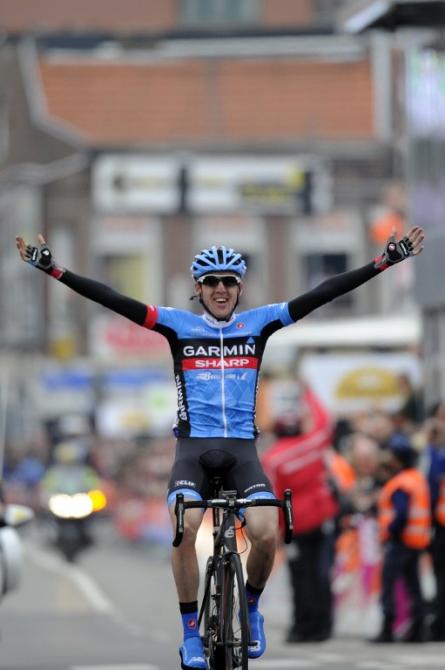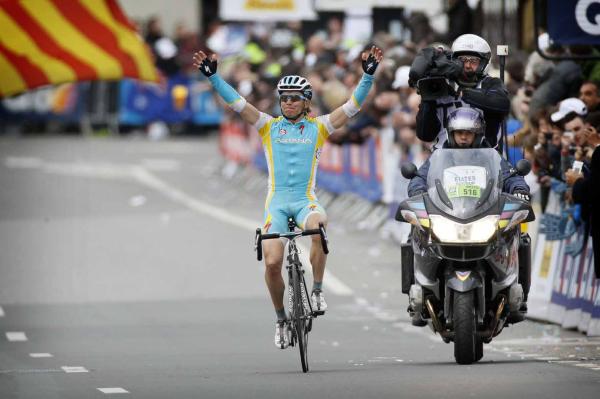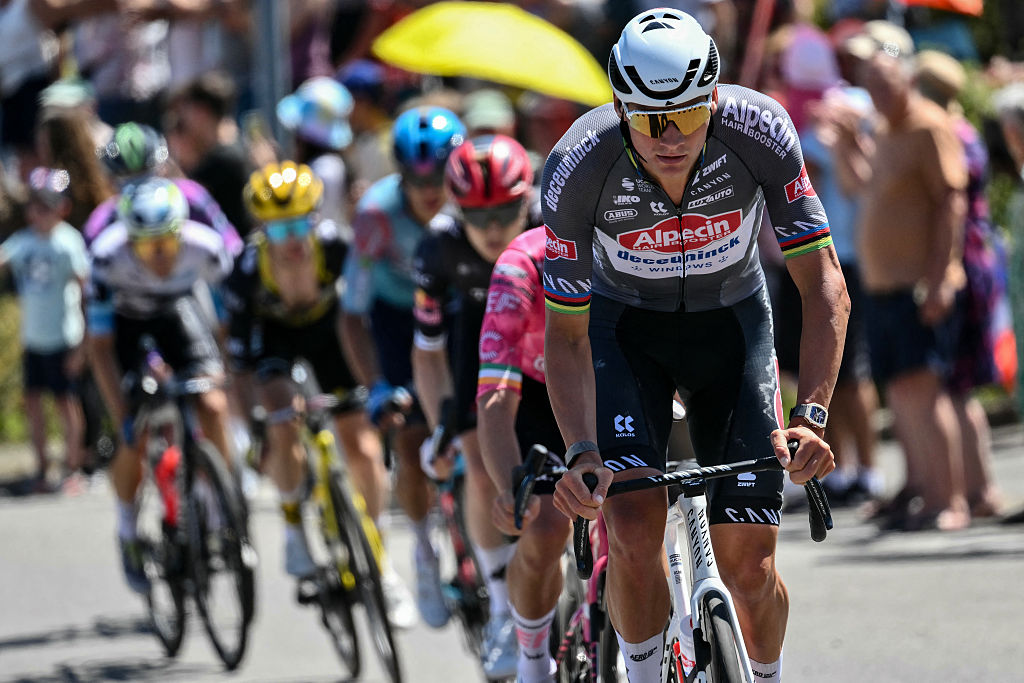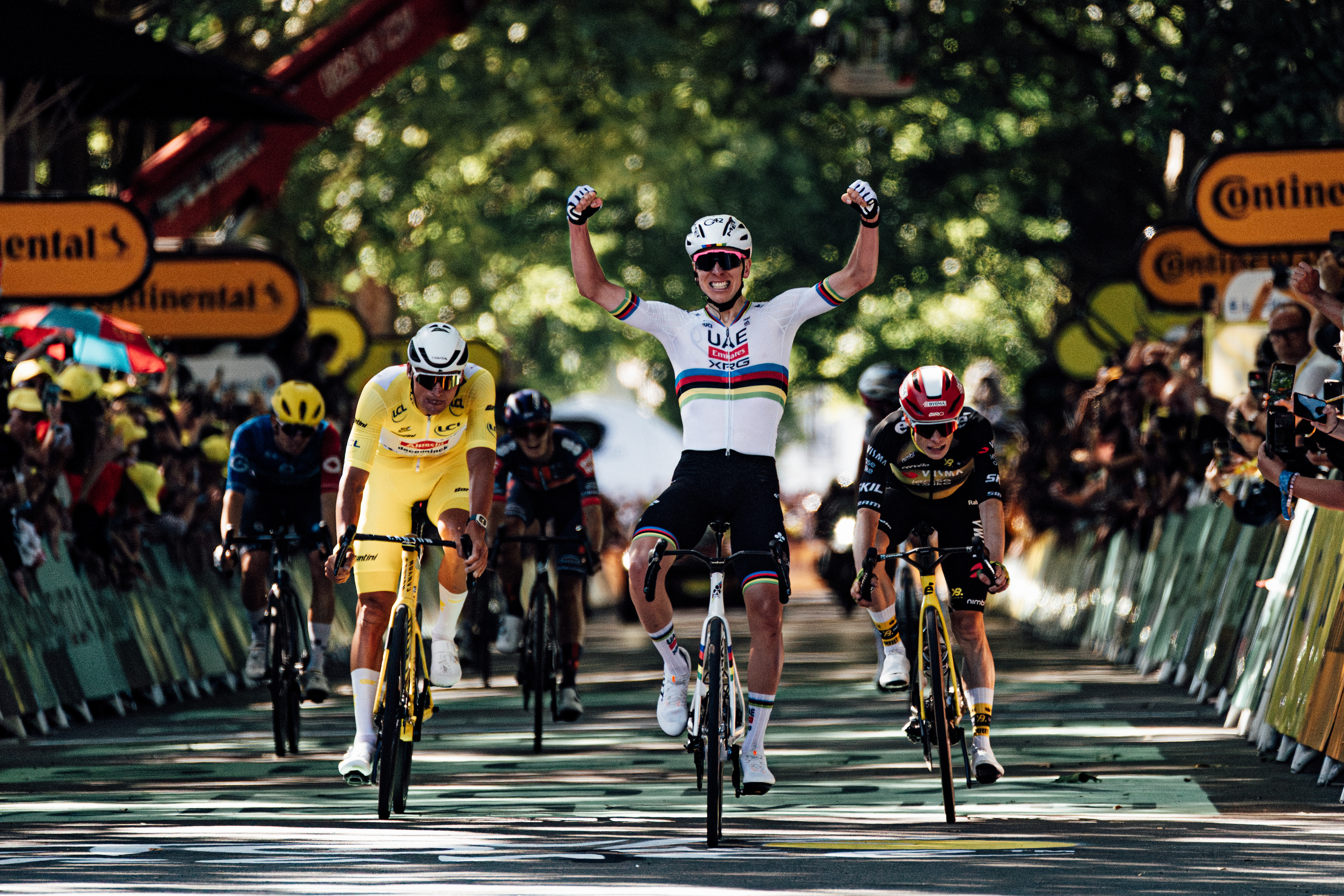Significant changes to Liège-Bastogne-Liège finale in 100th edition
Côte de Roche-aux-Faucons and Côte des Forges return to route


The debate about whether Monuments and the wisdom of route changes keeps many an internet forum going, but in Liège-Bastogne-Liège at least, the route has rarely stayed permanent, and in 2014 that continues to be the case, with yet more alterations in store.
This year the race organisers have re-introduced the notoriously difficult Côte de Roche-aux-Faucons, the ninth of ten classified climbs and where, since it first formed part of the course in 2008, many race-winning attacks have begun, most memorably Andy Schleck, when he soloed away in 2009.
Last season it was missing because of road works, but as Cyclingnews saw in a reconnaissance this morning, although the road surface is now much smoother - and there is no longer an open drain running down the middle of the first segment - the 1.5km climb remains as tough as ever. Its initial summit is still followed by several sections of false flat prior to a breakneck descent down to the River Meuse and the even more decisive Côte de Saint Nicolas climb.
The second key change is the re-introduction of the Côte des Forges, a steady, two kilometre grind of a climb on well-surfaced roads, immediately before the Roche-aux-Faucons ascent. Although unlikely to see attacks go clear, it will help keep the tension high.
The approach to the Côte des Forges is extremely tricky, too, with the unclassified 1 kilometre climb of Sprimont then followed by a sudden right-hand turn onto extremely narrow, bumpy village backroads and poorly surfaced farm-tracks.
The Côte des Forges is, curiously enough, famous for a rider whose best placing in a Liège-Bastogne-Liège was fourth in 1991, Miguel Indurain. When the Tour de France came through here in 1995, Indurain attacked with Johan Bruyneel over the summit of the Mont Theux, and they consolidated their advantage - and dropped their most persistent pursuer Eric Boyer - on the Forges. At the summit of the Forges there is a plaque and statue dedicated to Stan Ockers, 1955 Liège-Bastogne-Liège winner and world champion, who died in a crash during the 1956 Six Days of Ghent.
With the last 50 kilometres of Liège-Bastogne-Liège much harder than usual, the organisers have made for a slightly easier approach to another key climb, La Redoute, wiping three climbs and replacing them with the 3.1 kilometre Côte de la Vecquée.
Missing for the last four years, the Vecquee is a steady, straight climb - as you might expect from an old Roman road - through dense forests. The Vecquée was where Alexandre Vinokourov and Jens Voigt attacked in the 2005 Liège-Bastogne-Liège, at a speed, so rumour has it, of 33 kilometres an hour! A fast and very long descent then follows to the Redoute.
With so many changes, it’s hardly surprising that almost every team taking part in the centenary edition of the race carried out a full-scale reconnaissance on Friday morning, much to the delight to the dozens of fans already with their mobile homes in place on the Redoute and Roche-aux-Faucons.
The two top favourites for many are almost certainly Philippe Gilbert (BMC) and Alejandro Valverde (Movistar), although as Valverde himself stated, “there are plenty of other potential candidates out there.”
Liège-Bastogne-Liège’s 10 climbs of 2014:
1. Côte de la Roche-en-Ardennes: km 70
2. Côte de Sain Roch: km 123
3. Côte de Wanne: km 167
4. Côte de Stockeu: km 173.5
5. Côte de la Haute-Levée: km 179
6. Côte de la Vecquée: km 201
7. Côte de la Redoute: km 218.5
8. Côte des Forges: km 231.5
9. Côte de la Roche-aux-Faucons: km 243.5
10. Côte de Saint Nicolas km 257.5
What’s still in place:
The Côtes de Wanne, Stockeu and Haute-Levée, the trio of climbs that represent the first ‘crunch moment’ of the race. The Haute-Levée’s absence between 1997 and 2005 was widely attacked for making it too easy for riders to remain in the main bunch until the finale.
Côte de La Redoute: the most hallowed climb of LBL, first introduced in 1974.
Côte de Saint Nicolas: the last ascent of the race, and scene of the most decisive battles of recents races.
What’s out:
Col de Colonster: the much-criticised substitute for the Roche-aux-Faucons, but in fact where the race really sparked into life in 2013 as Rui Costa attacked at its foot and Alberto Contador towards the summit.
Col de Maquisard, Col de Rosier, Mont Theux: three rolling, steady, climbs between the Haut Levee (km 179) and the Redoute (km 218.5), which have been replaced by the Côte de la Vecquee (km 201).
What’s back:
Côte des Forges (km 231.5): A key climb during Miguel Indurain’s famous Ardennes attack in the 1995 Tour, taking the race by the scruff of its neck prior to panning everybody in the next day’s time trial.
Côte de la Roche-aux-Faucons (km 243.5): together with Saint-Nicolas, a crunch moment in the finale since 2009
Click here to subscribe to the Cyclingnews video channel.
The latest race content, interviews, features, reviews and expert buying guides, direct to your inbox!
Alasdair Fotheringham has been reporting on cycling since 1991. He has covered every Tour de France since 1992 bar one, as well as numerous other bike races of all shapes and sizes, ranging from the Olympic Games in 2008 to the now sadly defunct Subida a Urkiola hill climb in Spain. As well as working for Cyclingnews, he has also written for The Independent, The Guardian, ProCycling, The Express and Reuters.
Latest on Cyclingnews
-
Tour de France stage 6 Live – Mathieu Van der Poel and Simon Yates present in star-studded breakaway poised to contest for the stage win
Six categorised climbs and 200km await on the roads from Bayeux to Vire Normandie -
Key moments from the Tour de France so far in pictures
The first five days of the Tour de France have showcased an exceptional Grand Depart and an early battle for the yellow jersey -
These great Amazon Prime Day exercise bike deals will help you hit your fitness goals this summer
Amazon Prime Day sees huge 64% discounts on the best exercise bikes from brands like Peloton and Echelon -
Amazon Prime Day Bike Deals Live: 33% off Garmin computers, Electric pumps and Tacx smart trainers
Deals on Canyon electric bikes, Adidas shoes, AirPods and more. Day three of Amazon Prime Day is here, and the sale is heating up




